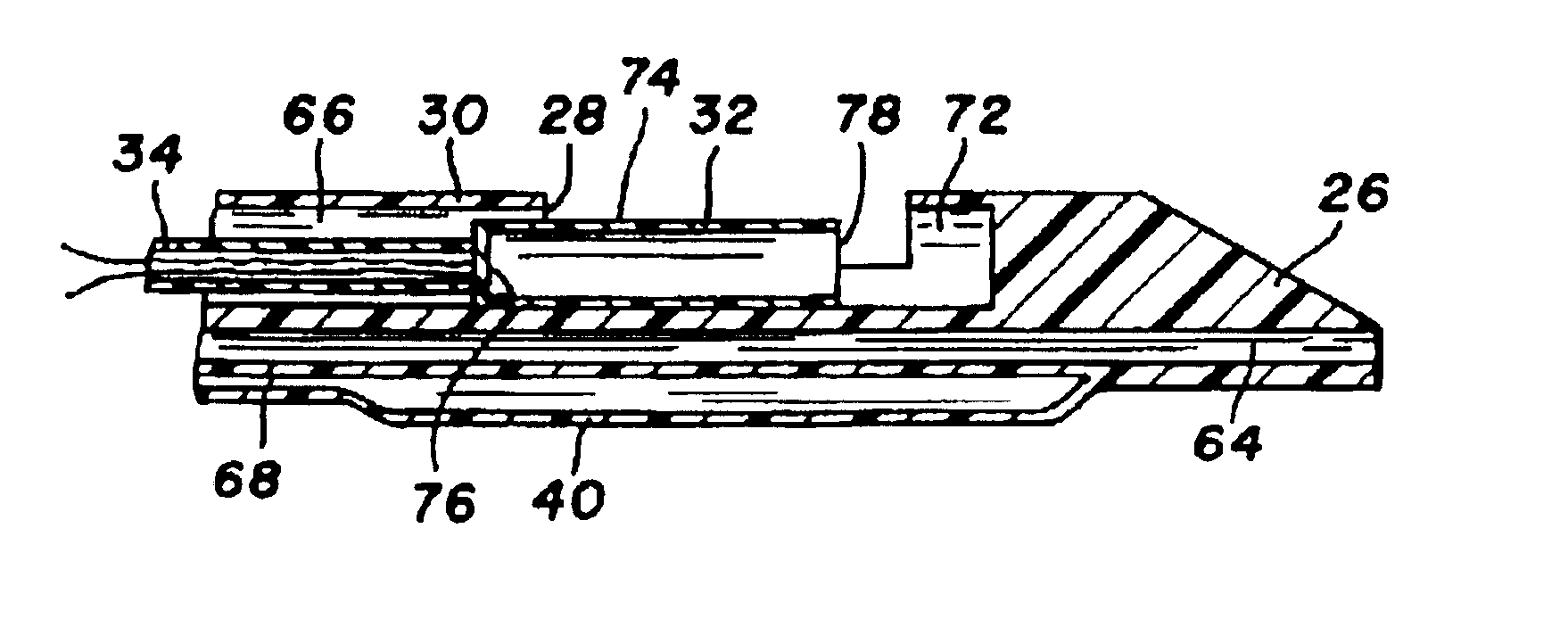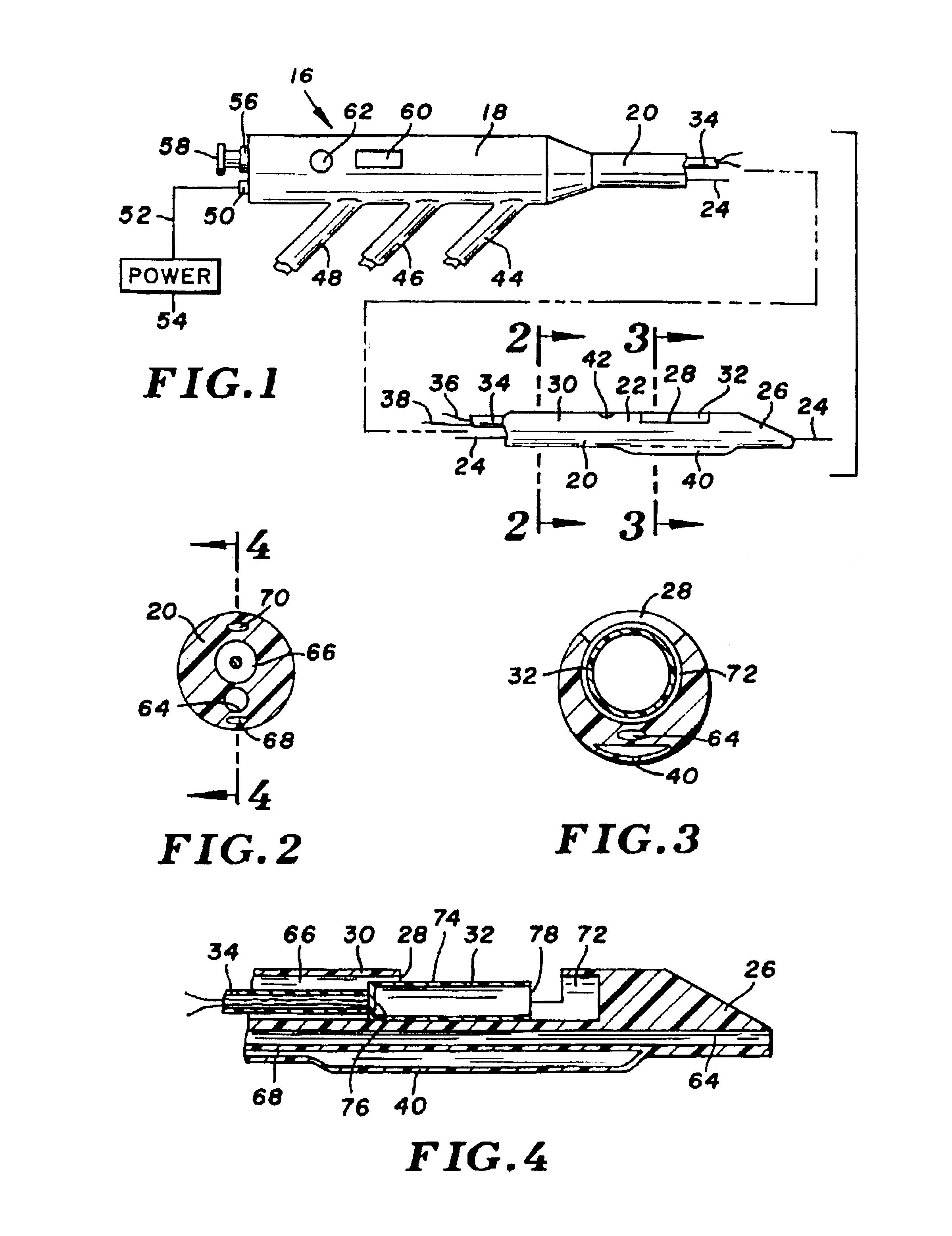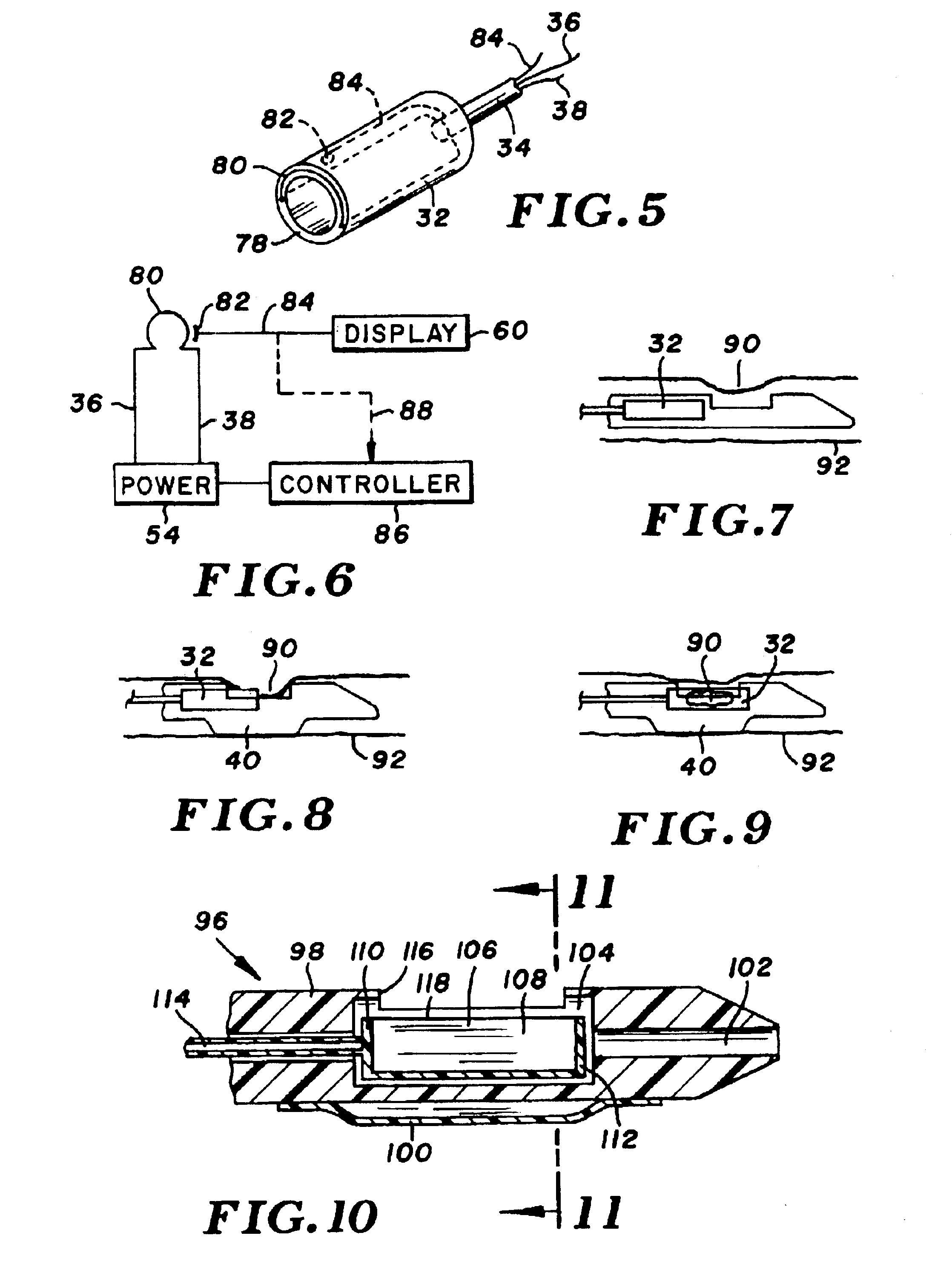Tissue cutting catheter and RF cutting method
a cutting catheter and tissue technology, applied in the field of tissue cutting catheters and catheters, can solve the problems of limited conventional atherectomy catheters, acute and potentially life-threatening reclosure of the artery, and the creation of potential lesions sites
- Summary
- Abstract
- Description
- Claims
- Application Information
AI Technical Summary
Benefits of technology
Problems solved by technology
Method used
Image
Examples
Embodiment Construction
Turning now to the drawings, there is shown in FIG. 1 an atherectomy device 16 for removing unwanted tissue from body lumens, more particularly blood vessels. The device includes a control housing or handle 18, and an elongate and pliable catheter 20 connected at its proximal end to the handle.
Catheter 20 is formed of a biocompatible polymer such as Pebax (brand name) polyether block amides, Pellethane (brand name) polyurethane or polyimide, and can have an outside diameter in the range of 3 Fr. (1 mm) to 8 Fr. (2.7 mm) or larger. Catheter 20 includes several lumens that run axially from handle 18 to a distal end region 22. A guidewire 24, contained within one of the lumens, extends proximally beyond handle 18 and distally beyond a tapered distal tip 26 of the catheter. Further lumens are provided in the catheter, for delivery of contrast fluid or treatment fluid to the distal end region, and for balloon inflation. While not shown, a braided or other filament structure can be embedd...
PUM
 Login to View More
Login to View More Abstract
Description
Claims
Application Information
 Login to View More
Login to View More - R&D
- Intellectual Property
- Life Sciences
- Materials
- Tech Scout
- Unparalleled Data Quality
- Higher Quality Content
- 60% Fewer Hallucinations
Browse by: Latest US Patents, China's latest patents, Technical Efficacy Thesaurus, Application Domain, Technology Topic, Popular Technical Reports.
© 2025 PatSnap. All rights reserved.Legal|Privacy policy|Modern Slavery Act Transparency Statement|Sitemap|About US| Contact US: help@patsnap.com



